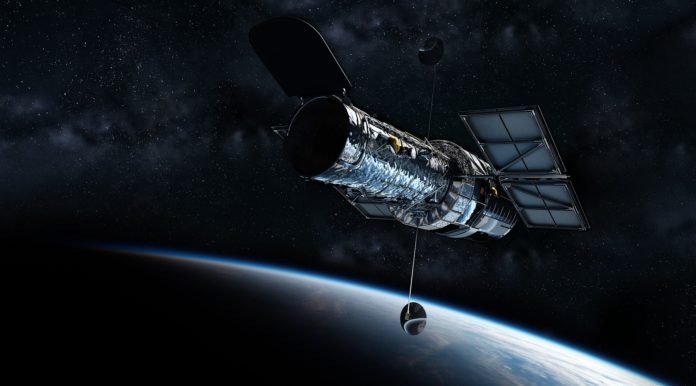The exoplanet known as K2-18b certainly isn’t an “Earth 2.0”. It’s eight times more massive than our home planet, and it orbits every 33 days around a star much smaller and cooler than our Sun. And although it may be located in its parent star’s habitable zone — that sweet spot far enough away from a star where it isn’t too hot for liquid water to form, but still close enough that liquid water won’t freeze — K2-18b is almost certainly not habitable for life as we know it.
Thanks to new research from the University of Montréal, however, we now know that K2-18b and the Earth do share one crucial similarity that has previously been elusive in the atmospheres of habitable-zone exoplanets: water vapour.
The research was released on the astronomy preprint server, with an independent analysis published the following day in Nature.
The atmospheres of distant worlds
Learning about the atmospheres of distant worlds is tricky. Stars are many times brighter than the exoplanets they host, and trying to look directly at a exoplanet next to its bright parent star is like trying to spot a fly next to a spotlight.
Instead, astronomers wait until the exoplanet passes in front of, or transits, its parent star. During transit, they can look at how the light from the star changes as it passes through the exoplanet’s atmosphere. Different types of gas leave unique signatures on light — similar to a fingerprint — and by studying these signatures, astronomers are able to figure out which elements exist in the exoplanet’s atmosphere.
Using data from the Hubble Space Telescope, this is exactly what the researchers did. They watched K2-18b pass in front of its parent star eight different times, and noticed a unique feature imprinted on the light by the exoplanet’s atmosphere at exactly the location where you’d expect water vapour to leave its mark.
This method has been used to detect atmospheres around exoplanets before. In fact, it’s already been used to detect water vapour in the atmospheres of exoplanets several times.
What’s exciting about this result is the size and location of the exoplanet in question. Most atmospheres that have been detected in the past have been around massive exoplanets very close to their parent stars, because these will leave the biggest fingerprints on their parent stars’ light.
But K2-18b represents the first time astronomers have been able to find water vapour in the atmosphere of a relatively small exoplanet located in the habitable zone, which is a big step forward in one day finding liquid water on the surface of an exoplanet, and maybe even finding signs of life in the Universe.
“This represents the biggest step yet taken towards our ultimate goal of finding life on other planets, of proving that we are not alone,” said Björn Benneke, a professor at the Institute for Research on Exoplanets at the University of Montréal and lead author of one of the papers.
“This is a first.”
Water, water everywhere?
Exoplanet astronomers have long been interested in finding water on other worlds. Liquid water is crucial for life as we know it for many different reasons, and detecting liquid water on another planet would bring us one step closer to figuring out whether or not we’re alone in the Universe.
“If you talk to any biologist, they don’t care about vapour; they care about liquid water. Because biology only works when you have liquid water,” said Benneke.
While liquid water hasn’t been detected on an exoplanet yet, K2-18b may currently be our best shot at finding it. Benneke and his team created computer models of the exoplanet’s atmosphere based on their data, and found that water is likely to exist in the form of liquid droplets lower in the atmosphere than the water vapour they observed. If confirmed, this would represent the first time a water cycle had been observed on a planet outside our Solar System.
This doesn’t mean that life as we know it is likely to exist on K2-18b, however. Its thick, gaseous atmosphere likely results in surface pressures so high than even the most extreme forms of life on Earth would be unable to survive.
But there’s strong evidence that liquid water is present on K2-18b, and being able to find it there would bring us one step closer to finding it on exoplanets that actually are friendly for life like us.
“This is the first step toward really kind of exploring planets that are at the right temperature around other stars to see what’s going on there,” said Benneke.
Unfortunately, current telescopes likely aren’t powerful enough to detect liquid water on K2-18b, let alone smaller Earth-sized exoplanets. For that, we’ll have to wait for upcoming missions such as the James Webb Space Telescope or the proposed ARIEL Space Mission.
This means that it’ll be at least a few more years before we know whether or not the weather forecast on K2-18b is calling for rain.








































